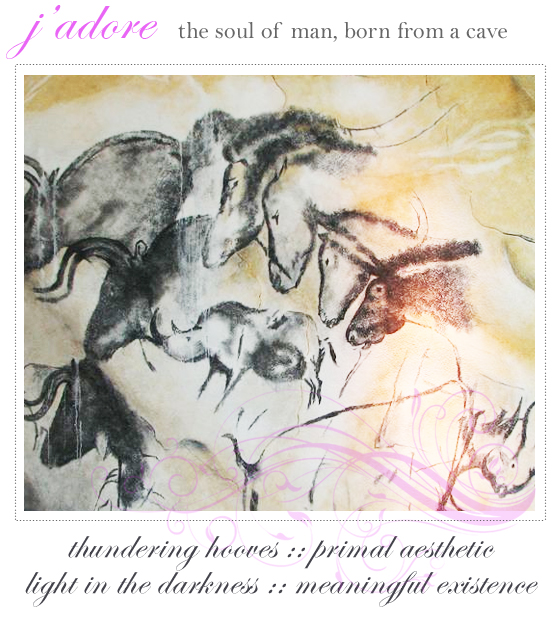
This Bird would be the first to say she's a skeptic over the fad of 3D making a comeback in theaters (Jaws III, anyone?), but in the case of Werner Herzog's documentary, Cave of Forgotten Dreams, I'm happy to be wrong and thrilled to absorb every dimension of this amazing film. It's currently being shown in limited release, but only in 3D, so yes, you have to pay a few extra bucks and wear the Ray Ban-looking glasses, but don't worry, everyone else has to wear 'em too, and it literally brings the exploration of the Chauvet cave drawings to life.
The discovery of the Chauvet Pont-d'-Arc Cave happened several years ago in 1994, by rock climbers exploring the limestone walls along the Ardeche River in southern France. The cave had collapsed many ages ago, but the explorers were able to crawl through the tunnels of calcified rubble and discover some of the oldest cave drawings ever found. It was a significant piece of human history made even more priceless by the fact that the cave's collapse helped preserve the drawings perfectly. Like opening a time capsule over tens of thousands of years old, the scratchings and scrapings of soot across the rock walls are eerily undisturbed. An ice age come and gone, civilizations built and destroyed, world wars spreading across the continent, and yet the drawings look freshly-made. The documentary directed and narrated by the avant-garde director Werner Herzog is a rare glimpse of the Chauvet cave's interior. To preserve the integrity of the drawings and the cave itself, access is extremely limited, so this film is significant for anthropological purposes as it is a soulful journey looking into the early developments of humanity.
The long, slow paning of the camera thoughtfully captures the drawings of horses, lions and rhinos, concentrated in scenes that suggest hunting or perhaps symbolic offerings to early shamanistic beliefs. The drawings are layered in fluid, elegant strokes and shaded-in with charcoal while following the natural contours of the rock, made that much more visceral as you view it through the 3D glasses. Every curve of rock, married with the artful and voluminous shading suggests a level of sophisticated technique unexpected of prehistoric humans. While carbon dating confirm these drawings were done eons ago, it takes the soul of an artist like Herzog to explore the significance of these drawings and translate their beauty into the query of who we are today as a civilization.
His narration is slowly-paced, whimsical at times and then deliberately silent, to allow a moment of self-discovery to take place when viewing this message from the past. Herzog uses interviews from scientists and anthropologists to frame the biggest question, which is more rhetorical than anything else: is this where the human soul was born? Through art and culture, did early humans start to think more abstract, outside of the world they could see, and start to look inward, seeking a sense of meaning beyond basic nourishment and shelter. It's difficult to not be haunted by the beauty of the cave art, the delicate line quality and the symbolic nature of some of the drawings. It suggests an understanding of greater forces at work, even at those developmental stages of the species. It suggests that humans were perhaps always hardwired for faith and the need to seek out the divine.
While the film may seem slow in parts, or too deliberate in its need to absorb every drop of the cave's mystery, it echoes that scientific need to cover every milimeter of space and map out its potential for understanding. The Chauvet Cave's story is told in an almost mythic fashion, pieced together from different narrative sources, but not trying to produce a clear-cut answer. There simply isn't one, and there is no way to truly understand the mind of the artists behind these drawings. But the familiarity with the forms, the universal appreciation of its aesthetic qualities suggest a language that surpasses the barrier of time, that to marvel at its beauty is to tap into a deeply-ingrained language from within one's soul. To quietly ponder prehistoric drawings, even through the futuristic lens of 3D glasses in a theater, it evokes a spiritual dialogue that has no words, only the steady rhythm of a synchronous heartbeat in the darkness of a cave.
Jaunty Fine Print: photo from Wikipedia




No comments:
Post a Comment
Merci buttercups! Your comments are appreciated! (hit the 'post comment' button twice, sometimes it's buggy)